The basics of growing a healthy garden require you to keep your soil properly fertilized with good quality vegetable garden fertilizer so you grow healthy crops.
Getting the proper soil is not so easily accomplished; it requires a good deal of effort on your part. As even beginners can tell you, the secret to a perfect garden is an enriched soil, but to make that happen you will need to fertilize your soil first.
Never underestimate the benefits of a good quality vegetable garden fertilizer. For healthy growth, plants require nutrients such as nitrogen, phosphorous, and potassium. And these are the top three fertilizers.
Vegetable Garden Fertilizers have everything your crops need to thrive, promoting crop yields and pest resistance. It also refines soil texture, insinuates healthy bacteria and helps recycles nitrogen. In this article, I will show you the five best DIY Vegetable Garden Fertilizer recipes and tricks that every backyard gardener should know.
Fertilizers basically fall into two broad categories:
- Synthetic Chemical Fertilizers
- Organic Natural Fertilizers
Synthetic Vegetable Garden Fertilizers
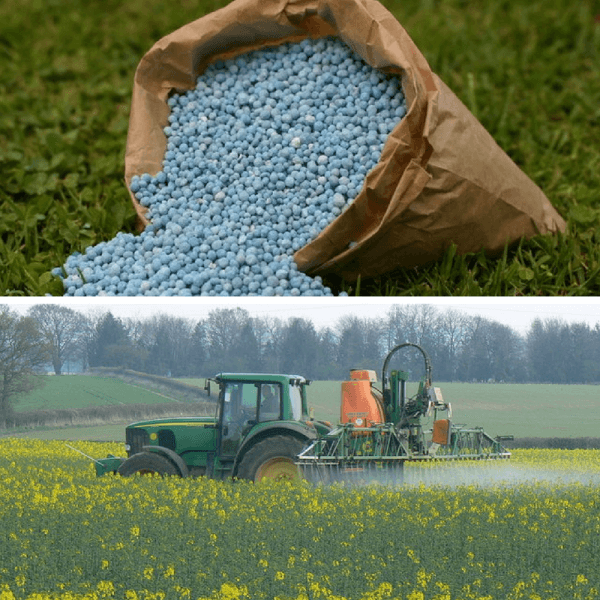
These fertilizers are essentially made from petroleum, rock, and other chemical sources.
The required plant nutrients can be added to synthetic fertilizers, and it’s true that they do work faster than organic fertilizers, but that benefit comes with a side effect. They can slowly drain all the other nutrients from the soil and in the end, might actually start to decrease the growth of the plants.
Synthetic fertilizers do nothing to sustain soil health since they do not replenish any trace elements that are depleted from continuous cropping of the garden beds. Most importantly, repeated application of such fertilizers can cause a build up of toxic substances such as cadmium or arsenic that are harmful to human health. Long-term use of chemical fertilizers increases the release of greenhouse gases, upsets the beneficial microbes needed by the plant, and acidifies the soil.
Repeated application of chemical fertilizers can cause a build up of toxic substances such as cadmium and arsenic that are harmful to human health. Try these 5 homemade organic fertilizers instead...Click To TweetOrganic Vegetable Garden Fertilizers
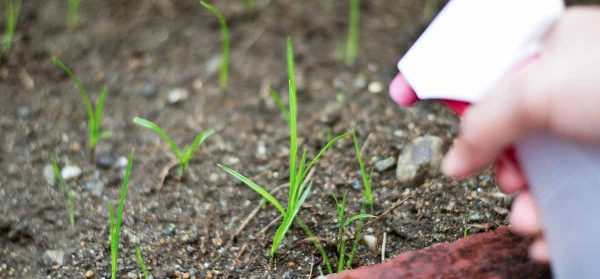
Organic fertilizers enrich the soil with a wide array of nutrients over a long period of time. This method might be time-consuming but it greatly reduces the chances of having bad soil.
Organic fertilizers are minimally processed or made from products that are derived from natural sources. The nutrients in these types of fertilizers are not refined or extracted; rather they remain bound in their natural forms.
As the name suggests, most of these fertilizers are made from animal or plant waste. Organic fertilizers can hold water and nutrients and also improve the quality of your soil. Moreover, they are biodegradable, renewable and environmentally friendly. Since it is a slow release fertilizer, there is no risk of over-fertilizing or build up of toxic salts.
Organic fertilizers can be quite expensive (like this organic manure and compost blend) if you buy them in small bags at the store. However, you can also easily make many of these fertilizers on your own at home. Here are some homemade organic fertilizer recipes that you can make from ingredients easily found in your home.
For more organic gardening tips and advice read Weird Vegetable Gardening Tips That Actually Work
1. Simple Tea Fertilizer
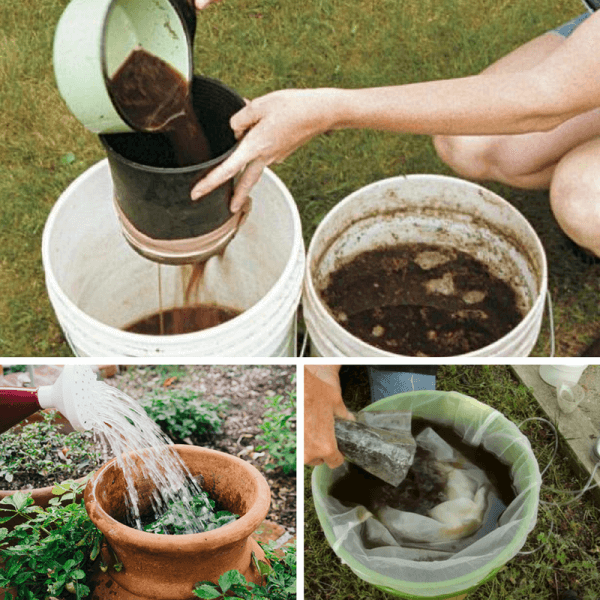
This is one of the simplest and most widely used homemade fertilizers. It has been tested by many gardeners who have all given positive reviews. Using simple household items it is also very cheap.
What You Will Need
- 5-gallon bucket
- ¼ cup of Epsom salts
- 2 cups of urine (disgusting but helpful)
- 2 cups of wood ash
- Grass clippings
- Pruned green leaves or weeds
Note: Make sure the wood ash does not contain charcoal or lighter fluids.
Instructions
Mix the Epsom salts, urine and wood ash in the 5-gallon bucket. Next, fill the bucket about halfway with the grass, leaves or weeds, whichever one you have. Fill the rest of the bucket with water and then let it steep for 3 days until all the nutrients are absorbed into the water.
After the 3 days are over, strain the tea off into another container. DON’T let it steep for more than 3 days as after that, fermentation starts which can change the pH level rapidly.
Before using your tea fertilizer, make sure to dilute it by 50% using half water and half tea. Then simply pour it onto your garden plants using a watering can and wait a few days for the result.
Tip: Epsom salts are a great provider of magnesium and sulfur, so you can add 1 tablespoon of Epsom salts and 1 gallon of water in a sprayer and apply once a month directly to the greenery as well. This will keep your crops leaves deep green an ensure they can photosynthesize at full capacity (magnesium is used in photosynthesis).
2. Fish Emulsion Fertilizer
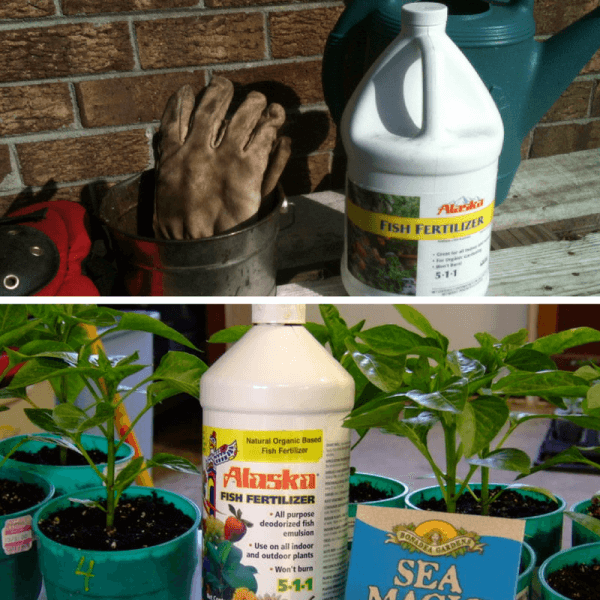
The Fish Emulsion fertilizer is basically using fish waste to fertilize your garden and although that does not sound appealing, and trust no part of it is nice, it is very beneficial for the soil.
What You Need
- 55-gallon drum
- A lot of water
- Fish guts, bones and heads
Instructions
Fill the drum to about 18 gallons with 2/3 water and 1/3 fish waste. Then leave the mixture to steep for 1 day. After a day, fill the rest of the empty drum with water. Then loosely cover the drum, leave it to ferment for approximately 3 weeks.
This fertilizer is very strong and should be applied with care. Use no more than 3 gallons for every 100 square foot of soil once a month.
Fish guts work really well for growing tomatoes. For more tomato growing tips visit Do These 9 Things To Grow The Best Tomatoes Ever.
3. Seaweed Fertilizer
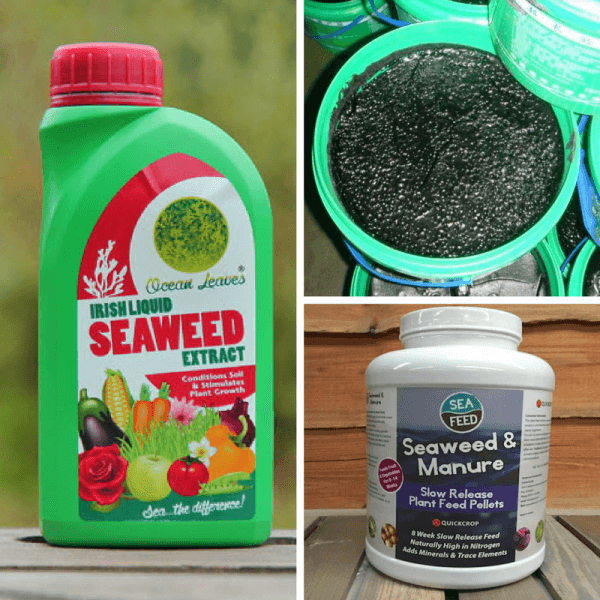
Seaweed is considered to be a great fertilizer due to the fact that they contain manitol which increases the plants ability to absorb nutrients. However, make sure that the seaweed is washed thoroughly so the salt on it doesn’t get into your garden soil.
What You Need
- 5-gallon bucket
- 8 cups of chopped seaweed
- Water
Instructions
Put the 8 cups of chopped seaweed in a bucket and fill the bucket halfway with water. Let it steep for about 3 weeks, then strain the seaweed and transfer the liquid fertilizer to another container to store for an additional 3 weeks.
Before using, fill half the watering can with water and the other half with the seaweed solution then apply to your crops. Seaweed contains many trace elements and will ensure your crops grow big and strong.
4. The Quick Fix Fertilizer
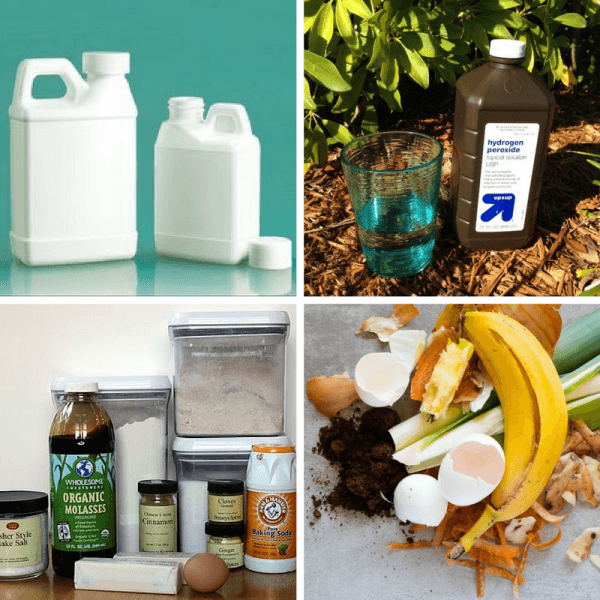
If you are the kind of person that doesn’t like to wait long, then it’s best that you try this vegetable garden fertilizer. Though it has a long list of ingredients and a complicated process, it does not require you to wait a long time before the fertilizer is ready for use. Plus most of these ingredients can easily be found around your home.
What You’ll Need
- 1-gallon jug
- 1 teaspoon baking powder
- 1 teaspoon ammonia
- 3 teaspoons instant iced tea (for tannic acid)
- 3 teaspoons of blackstrap molasses
- 3 tablespoons of 3% hydrogen peroxide
- ¼ cup of crushed bone scraps or bonemeal
- 1 crushed eggshell or ½ dried banana peel
- Water
Like I said, it’s quite a long list.
Instructions
Mix all of the above-mentioned ingredients in the 1-gallon jar and fill the remaining space with water. Put the cap on and let the jar sit in the sun for about an hour so the ingredients have time to extract nutrients from each other, then water your plants and reap your reward.
Tips: It’s best to use rainwater rather than tap, as some tap water has too much chlorine which will chemically react with the ammonia and hydrogen peroxide. If your water tastes like chlorine then boil it and let it cool before you use it.
This quick fix fertilize is great for container grown crops. If you want to grow more food in containers then read 8 Best Berries to Grow In Containers For Incredible Flavor
5. Manure Tea Fertilizer
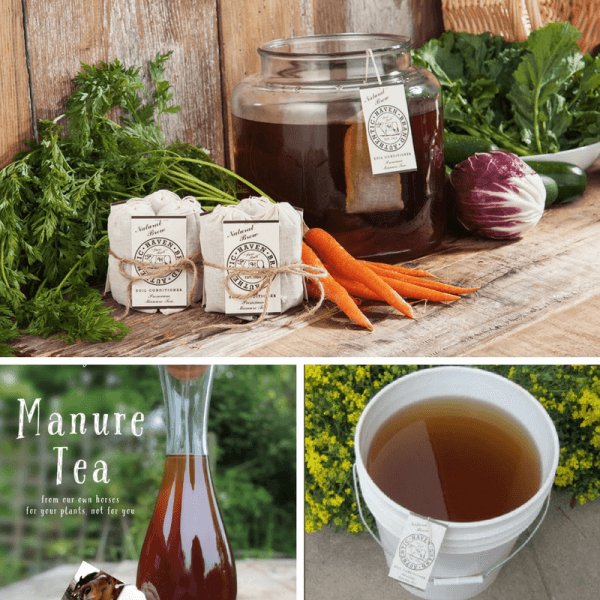
As it has been known for thousands of years, manure is one of the best fertilizers out there. When mixed with water, all the nutrients of the manure can easily be absorbed in the liquid. This can then be used to give your crops a nutrient rich bath and improve their growth and health. Just make sure that the tea is diluted first or you’ll burn the leaves on your plants.
What You’ll Need
- 5-gallon bucket
- 1 sack of ‘aged’ manure (anything that comes in a bag is aged, if using fresh then let it sit for 2 weeks before using it)
- Water
Instructions
Place the cured manure in a burlap sack and then place it in the bucket. Make sure the manure is cured because otherwise, it is too strong for the plants to handle and you will end up burning their leaves.
Fill the bucket with water and then leave this concoction to steep for about 2 weeks. After that, hang the manure sack above the bucket so that all the water is returned to the bucket as the manure dries.
Before using, dilute your manure tea with 50% water. The old manure can be spread over your garden beds as a mulch.
Small Tips for a Better Garden
As many people can tell you, fertilizers can also be found in your trash can, your home and even in the things you eat and drink. The reason why these fertilizers were not mentioned above is that they are relatively weak in terms of fertilizing and will probably not show as great a result.
Aquarium water is one such example, especially if it contained a lot of fish at some point.
Powdered milk can also make a good vegetable garden fertilizer, considering the fact that it is almost pure calcium. Mix the powder in the soil prior to planting.
Surprisingly, your hair can also be used as fertilizer. In fact, not only your hair but animal hair also has the same effect. All hairs have a good amount of nitrogen which is great for the soil. And fertilizers rich in nitrogen helps plants to grow faster by encouraging the formation of more and more leaves.
Used matches, although unusual, is a good source of magnesium for the soil. Simply place the whole match beside the plant. You can also try soaking them in water first which will dissolve magnesium. Then soak the soil with this water. This is a faster method to provide magnesium to the soil as the match heads are full of magnesium.
With regards to the ratio of application of the homemade vegetable fertilizers, apply Nitrogen, Phosphorous and Potassium in the ration 10-10-10. It is always wise to go with this ratioif you are not sure what your plants need.
Chemical fertilizers may give you a garden full of blooming flowers and rapidly growing plants, but in the long term, they are more harmful than beneficial. It’s not just about what’s happening on the ground in front of your eyes. Think about the damage that these chemicals are doing on the soil below your feet.
A wise gardener will want to live in harmony with nature. Make a conscious choice to use organic fertilizers if you desire lasting improvements in your patch of earth and want to enjoy the fruits of your labor for generations to come.
- Everything You Wanted to Know About Red Tamarillos - June 2, 2025
- A Guide to Tulips: Everything You Need to Know & More… - June 2, 2025
- Guanabana: Description, Flavor, Benefits, And Uses - May 27, 2025

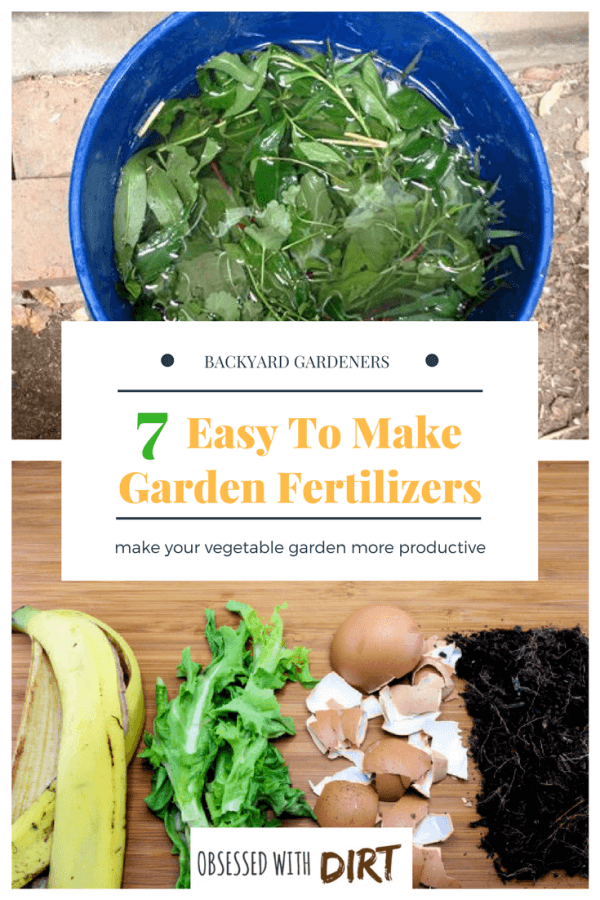
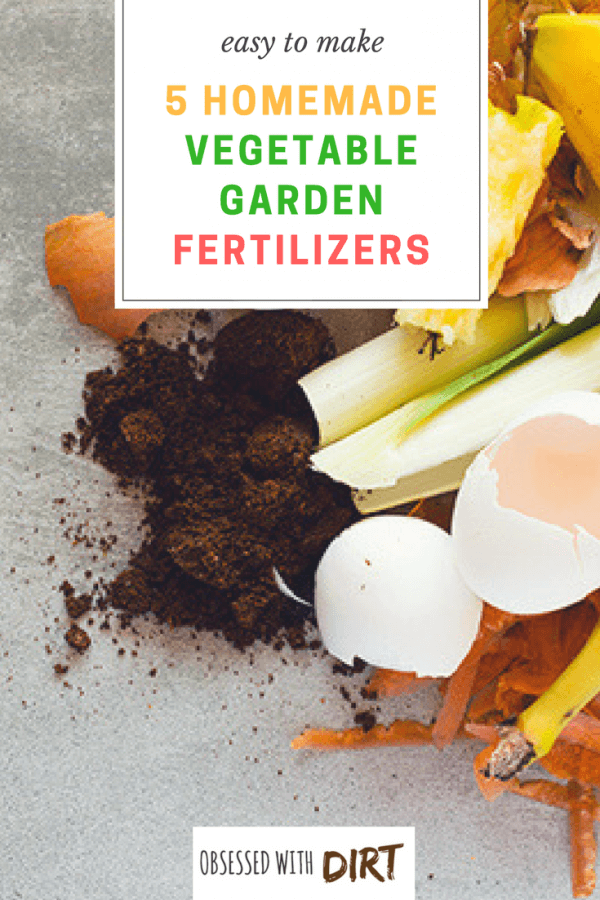
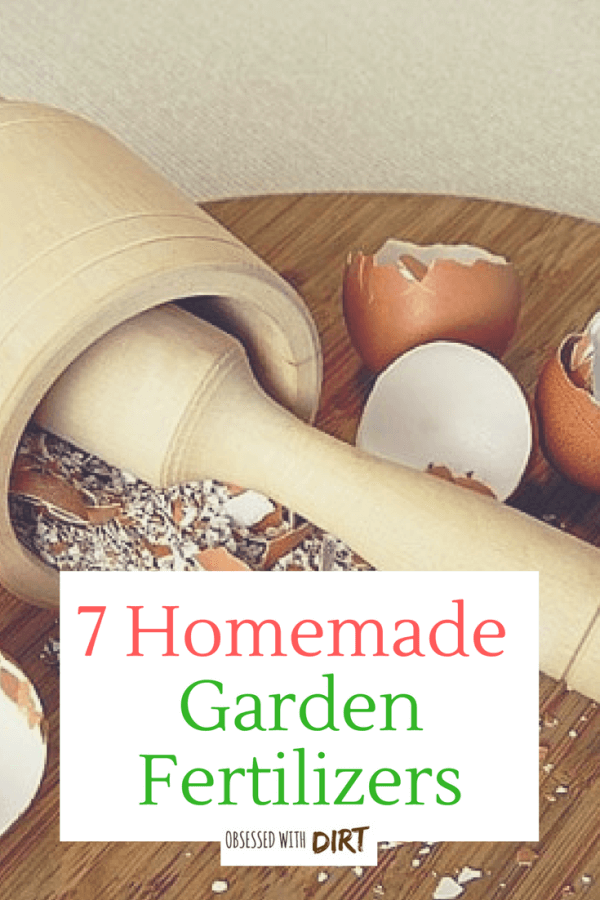
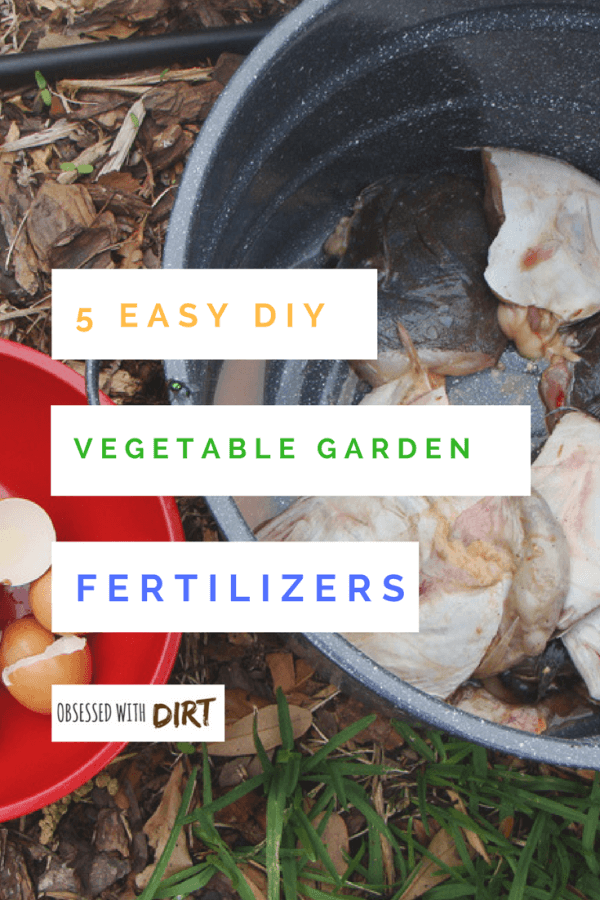
Thank’s for the info, I’m for anything that I can make at home from waste!
Hi Alton, glad you’re enjoying the blog! Thanks for commenting 🙂
stop throwing your shit in the garbage can and your pee down the toilet. what a waste. everything in the yard and in the house that is biodegradable (except fecal matter) goes into compost piles in the yard. like you said, it’s messy. but like joel osteen said, you have to crack a few eggs before you can make an omelette
Thank you very for sharing your knowledge about fertilizer.